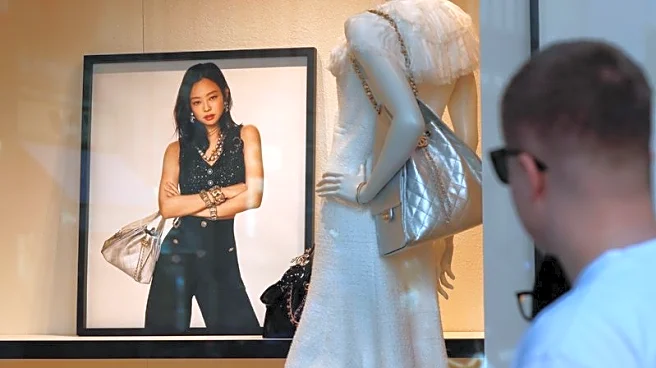What's Happening?
Hedi Slimane, former creative director at Saint Laurent, has won a legal battle against Kering, the parent company of the brand, over the rights to his campaign imagery. Slimane, who did not assign the rights to his photographs to the fashion house, retained authorship, leading to a legal dispute when Kering continued to use his work after his departure. The Paris Court of Appeal ruled in Slimane's favor, awarding him $700,000 in damages for the unauthorized use of his imagery, although he initially sought $6 million. This case underscores the unique contractual arrangements Slimane had, which allowed him to maintain control over his creative assets, a rarity in the fashion industry where brands typically hold the rights to advertising and design intellectual property.
Why It's Important?
The ruling in favor of Hedi Slimane is significant as it challenges the conventional norms in the fashion industry regarding intellectual property rights. Typically, fashion houses have comprehensive control over the creative work of their directors, including design patents and copyrights. Slimane's ability to assert ownership over his photographs sets a precedent for creative professionals seeking to retain rights to their work. This decision could influence future contractual negotiations between designers and fashion brands, potentially leading to more equitable agreements that recognize the creative contributions of individuals. It highlights the importance of intellectual property rights in protecting creative assets and may encourage other designers to seek similar arrangements.
What's Next?
Following the court's decision, fashion brands may need to reassess their contractual agreements with creative directors to avoid similar legal disputes. Designers might be inspired by Slimane's case to negotiate for greater control over their work, leading to shifts in industry practices. Brands could face increased scrutiny over their use of creative assets, prompting them to establish clearer guidelines and agreements regarding intellectual property rights. This development may also spark discussions within the industry about the balance between brand identity and individual creative expression, potentially influencing how fashion houses approach their collaborations with designers.
Beyond the Headlines
Slimane's victory not only highlights legal aspects but also cultural dimensions of creative ownership. His aesthetic, characterized by grunge-era apparel and rock-and-roll inspiration, has become synonymous with his name, transcending legal definitions of intellectual property. This case illustrates the tension between legal rights and cultural influence, emphasizing the power of a distinctive creative vision. Slimane's ability to maintain cultural ownership of his aesthetic, despite legal limitations, underscores the broader impact of creative work beyond contractual agreements. It raises questions about the role of cultural movements in shaping brand identities and the extent to which they can be protected by law.












